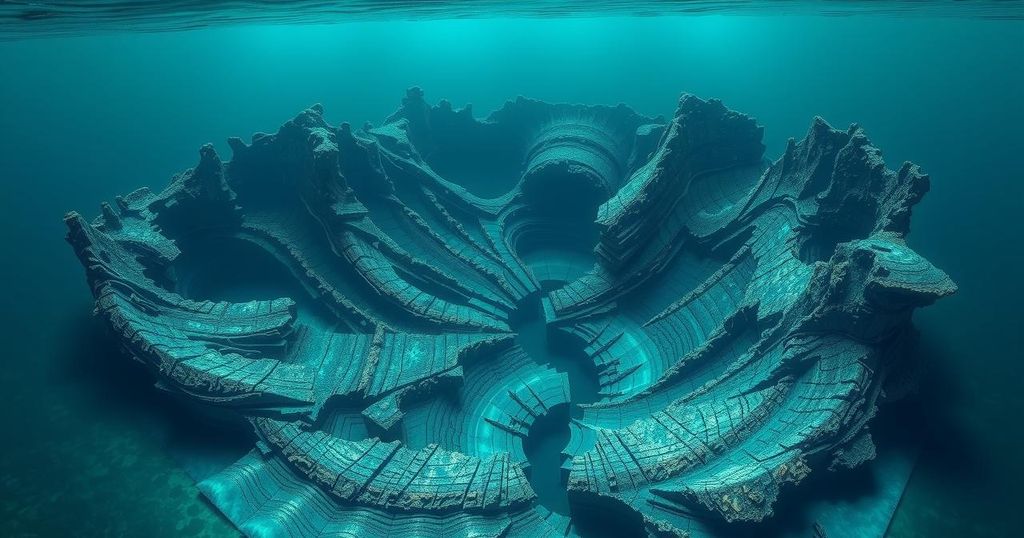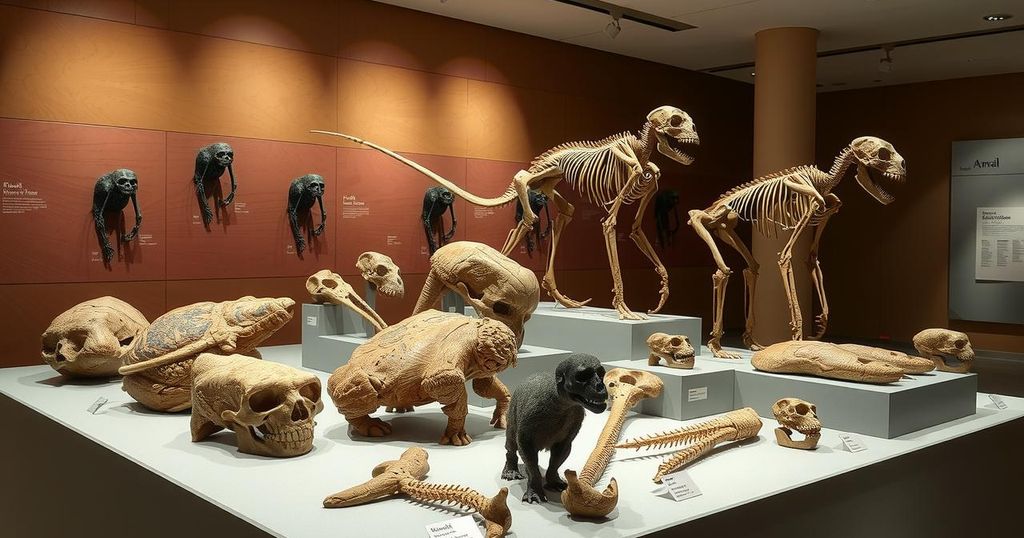Science
AFRICA, ARCHAEOLOGY, CHICXULUB, EDINBURGH, ENVIRONMENTAL IMPACT, EUROPE, FOSSIL DISCOVERY, FOSSILS, HERIOT - WATT, HERIOT - WATT UNIVERSITY, NATURE COMMUNICATIONS EARTH & ENVIRONMENT, NICHOLSON, NORTH AMERICA, PALEONTOLOGY, SCIENCE, UI, UISDEAN NICHOLSON, UNITED KINGDOM, UNITED STATES, UNIVERSITY, YUCATAN PENINSULA
Rajesh Choudhury
0 Comments
Research Reveals Second Asteroid Impact May Have Hit Earth Alongside Dinosaurs’ Extinction
New research shows that the asteroid responsible for the dinosaurs’ extinction wasn’t alone; another impact likely occurred around the same time. A newly studied underwater crater off Guinea’s coast offers evidence of a second large asteroid strike, which caused significant geological disturbances and a massive tsunami. This discovery expands our understanding of the catastrophic events shaping Earth’s history.
The giant asteroid that caused the dinosaurs’ extinction around 66 million years ago isn’t a lonely tale in the cosmos. We’ll see how researchers now suggest there could be more than one cataclysmic event around that time. New insights spill from underwater scans of a crater off Guinea’s coast that hint at another sizeable asteroid impact, possibly happening at the end of the Cretaceous period.
This crater, measuring over five miles wide, was born from a collision that likely took place between 65 and 67 million years ago. The guilty asteroid, while smaller than the infamous extinction-triggering one, was still a beast in its own right, measuring about a quarter of a mile across and hitting Earth at a staggering speed of nearly 45,000 miles per hour. “The new images paint a picture of the catastrophic event,” Dr. Uisdean Nicholson, a marine geologist with Heriot-Watt University, noted. This finding is certainly intriguing!
Dr. Nicholson, who discovered the Nadir crater last year, had previously scratched his head over the details of this impact. With advanced 3D seismic imaging under their belts, the scientists were able to map not only the crater rim but also geological scars lurking 300 meters beneath the ocean. Nicholson enthused that their work presents an unparalleled level of detail when compared to other known marine craters, saying simply, “It’s exquisite.”
The impact did more than create a dent. It sent shockwaves rippling through the sediments below the ocean floor, yielding liquefaction and creating dangerous faults under the seabed. Landslides and damage extended thousands of square miles beyond what we can see at the crater’s edge. To top it off, a tsunami over 800 meters high would have roared across the Atlantic Ocean following the collision! The specifics of this discovery are elaborated on in a recent publication in Nature Communications Earth & Environment.
Now, scientists can’t precisely nail down the timing of this second asteroid strike. Yet, the crater’s age hints at a hypothetical cluster of impacts occurring towards the twilight of the Cretaceous era. It’s also important to note that the asteroid responsible for erasing the dinosaurs’ existence was significantly larger than the one creating the Nadir crater. It gave birth to a whopping 100-mile-wide crater at Chicxulub on Mexico’s Yucatan Peninsula.
Dr. Nicholson reflected on the scope of these events, comparing it to a much smaller but still impactful 1908 incident known as the Tunguska event, where a 50-meter asteroid exploded over Siberia. He concludes, “The new 3D seismic data across the whole Nadir crater is an unprecedented opportunity to test impact crater hypotheses, develop new models of crater formation in the marine environment, and understand the consequences of such an event.”
A clearer picture is slowly coming into view with these new findings, hinting that the Earth has had its share of major impacts, not just the one that wiped out the dinosaurs. Sediments are telling stories of destruction, and scientists are keen to listen and learn from the past!
Discoveries from the underwater scans off Guinea reveal that the dinosaur-extinction asteroid likely wasn’t the only significant impact at the end of the Cretaceous period. A new crater suggests there could have been another asteroid strike, adding complexity to the ancient cataclysms we thought defined that era. The implications extend beyond mere curiosity; they allow researchers to dive deeper into the chaos of Earth’s geological past and its consequences on life. There’s much to learn about these cosmic collisions, and these scientists are eager to peel back the layers of history.
Original Source: www.theguardian.com




Post Comment